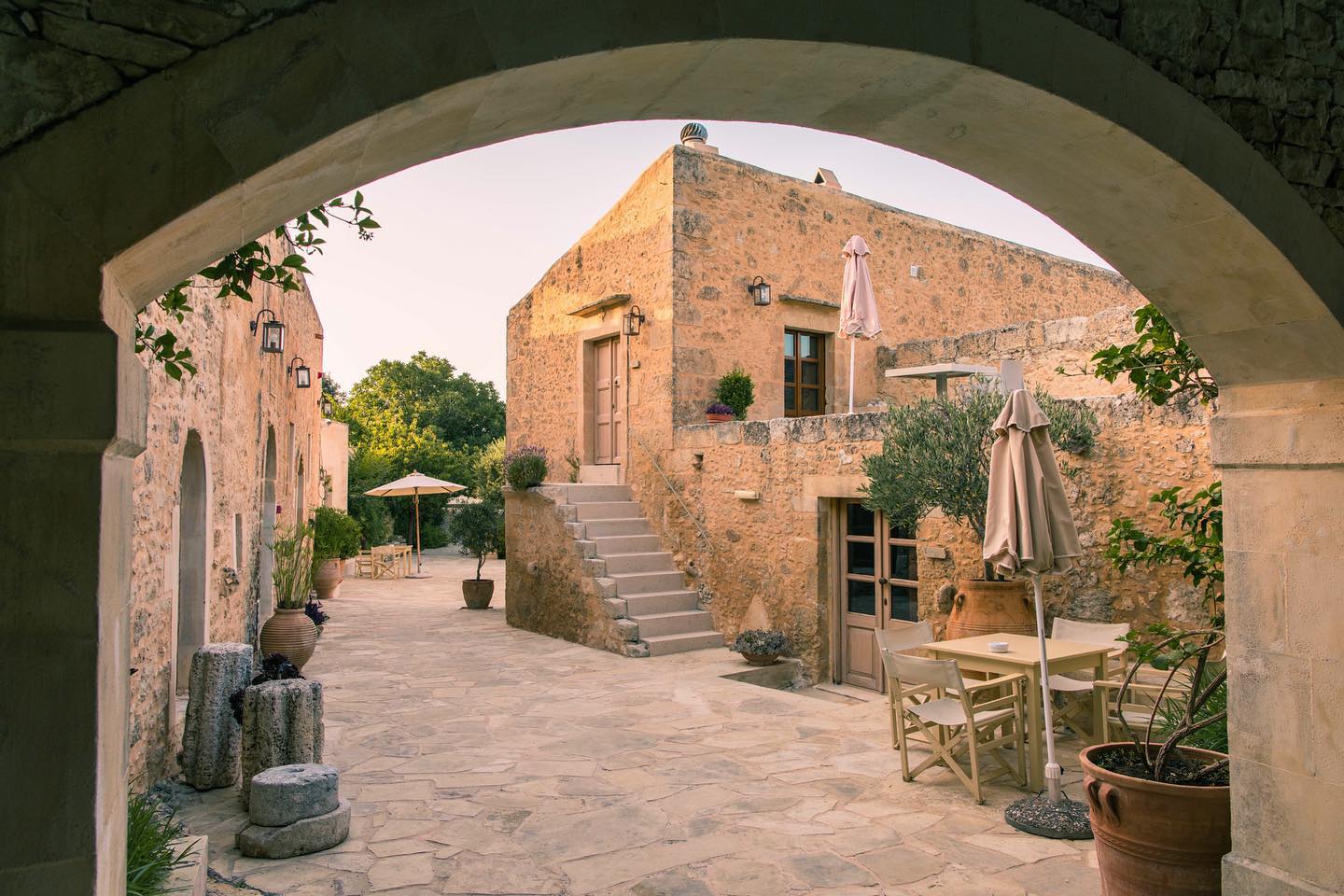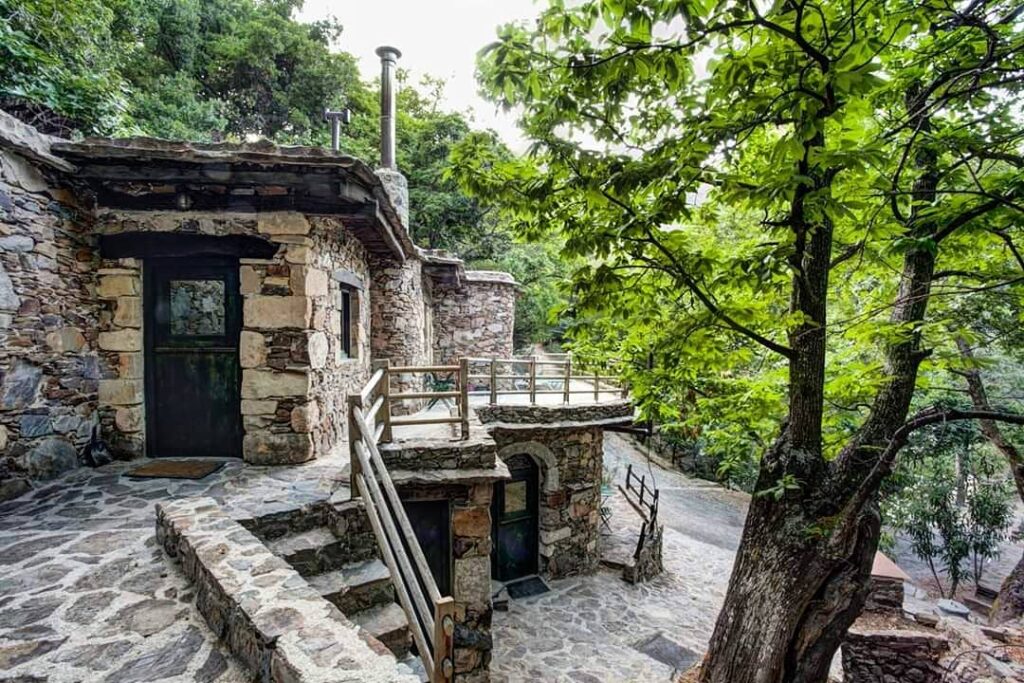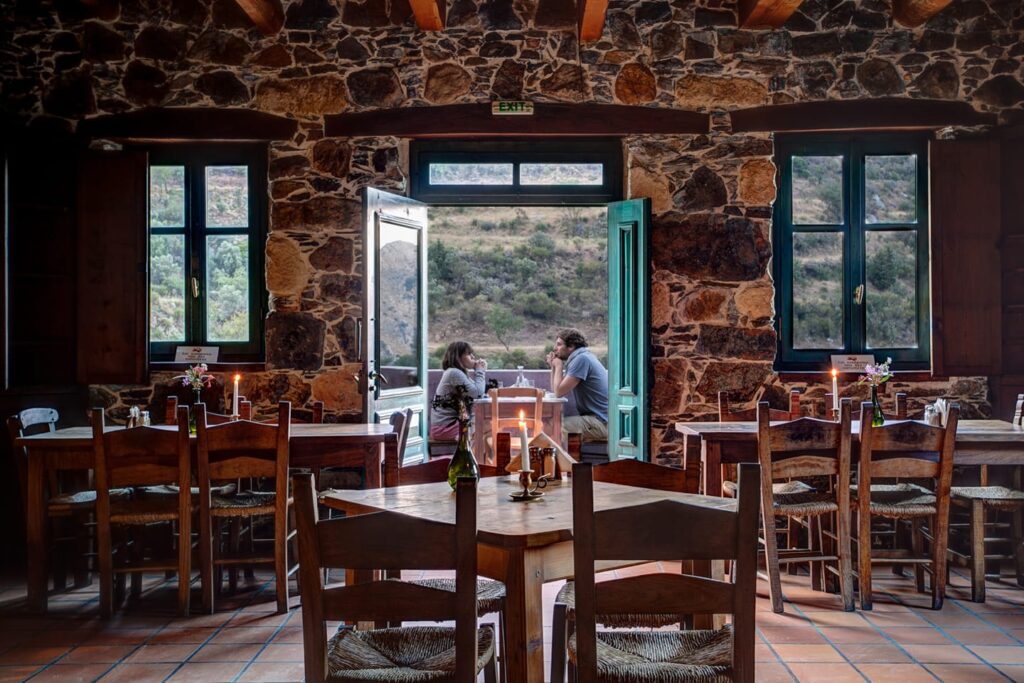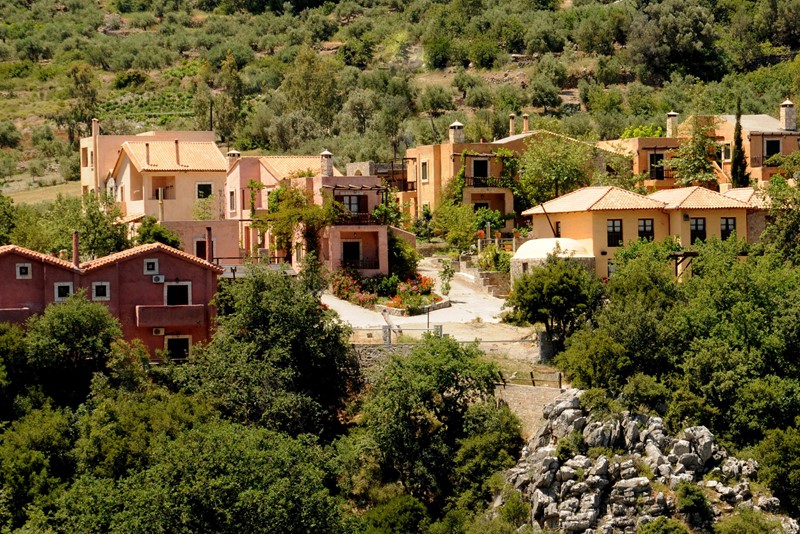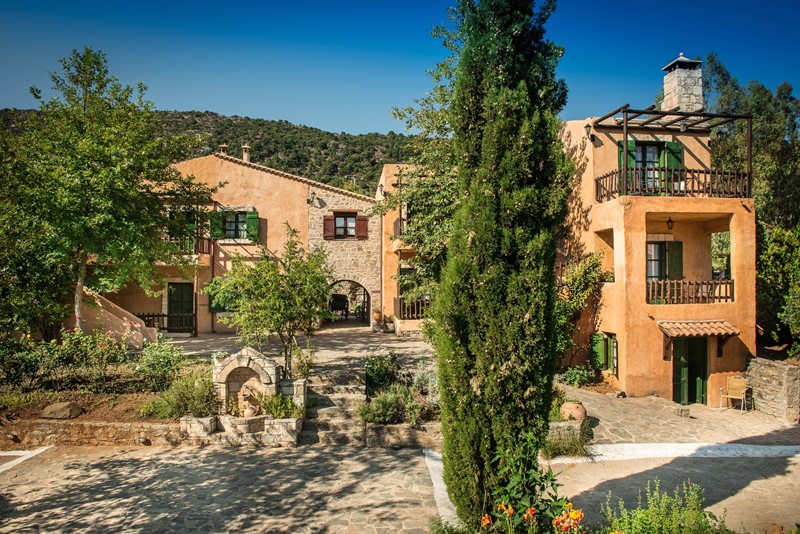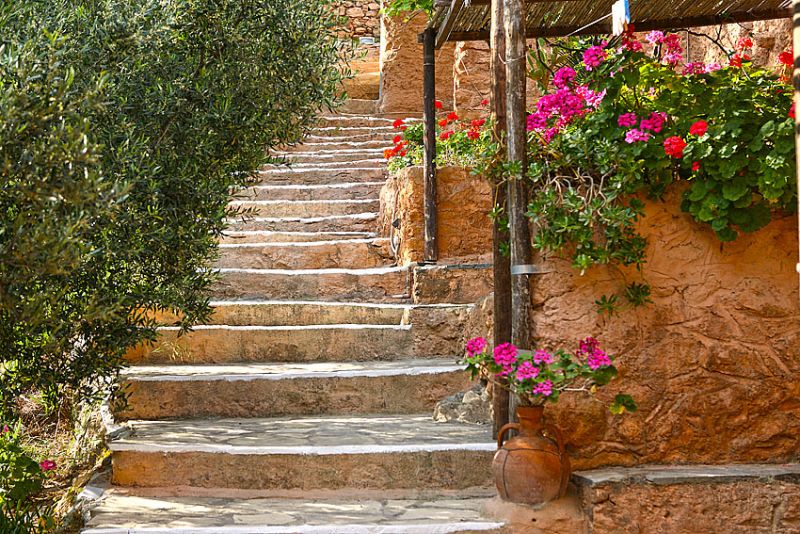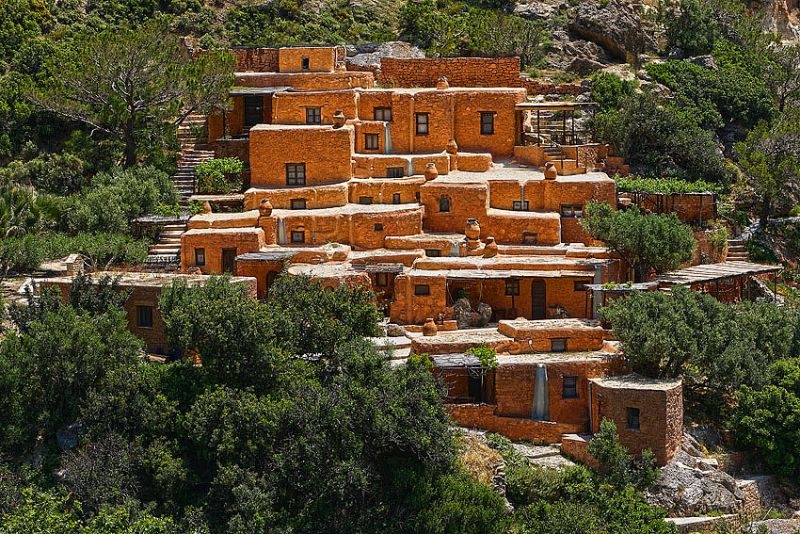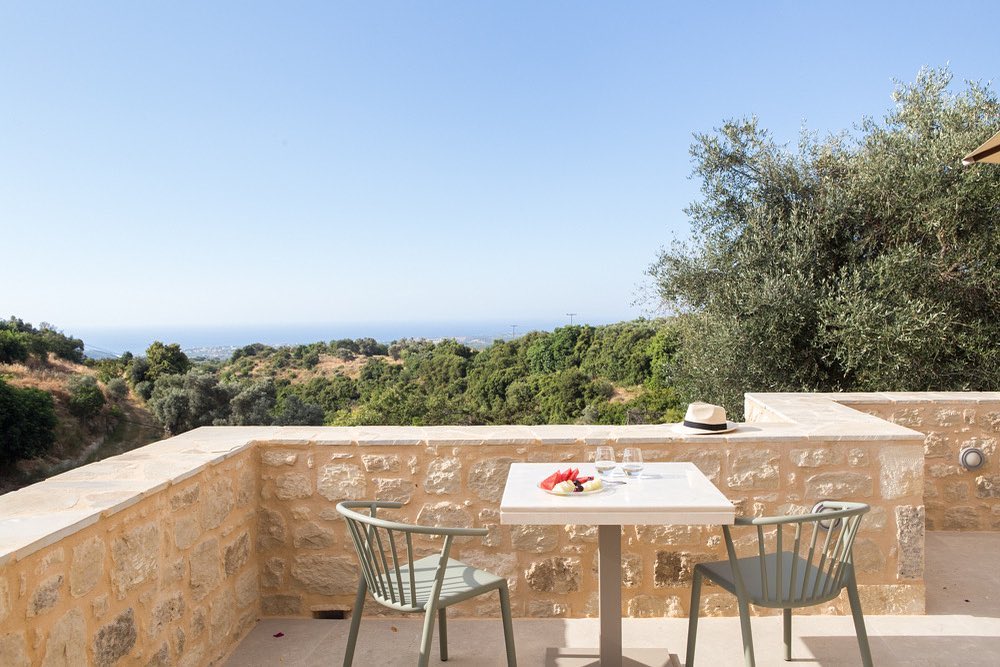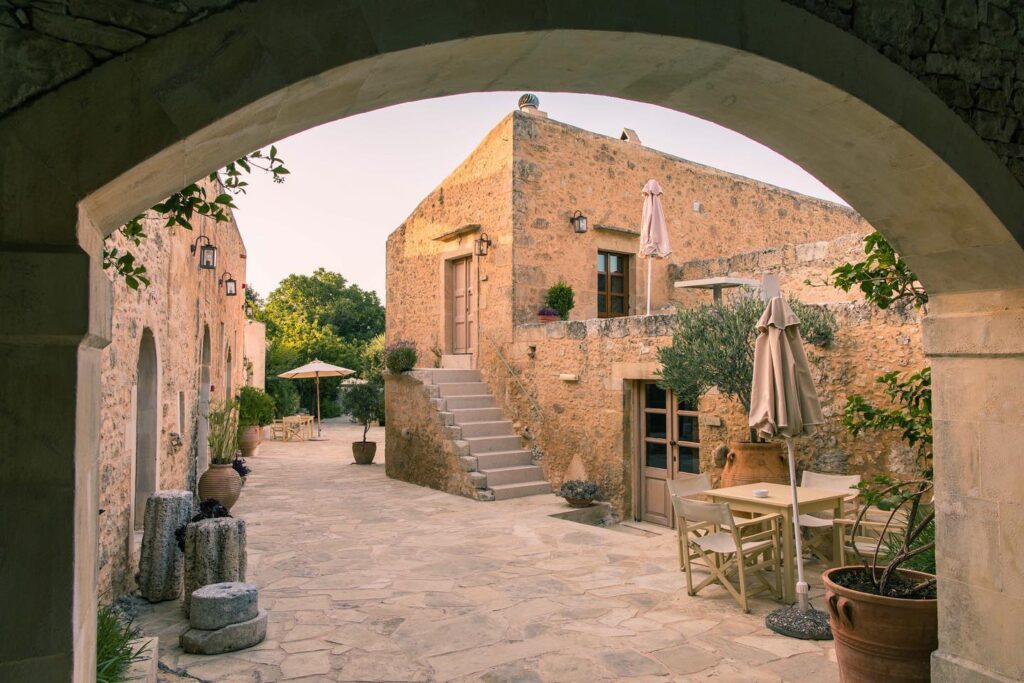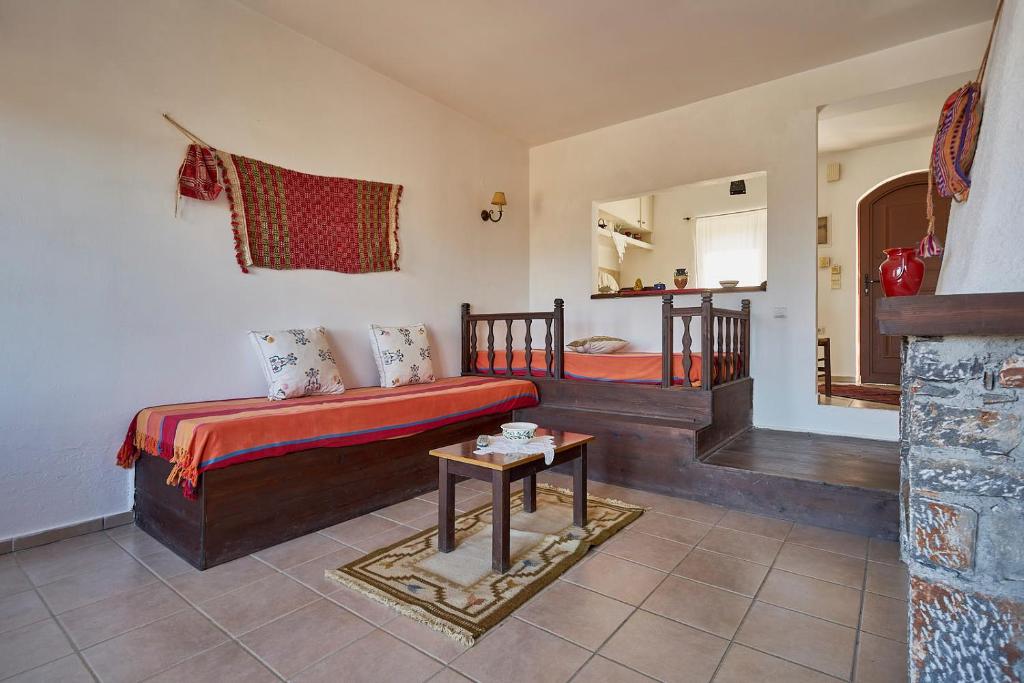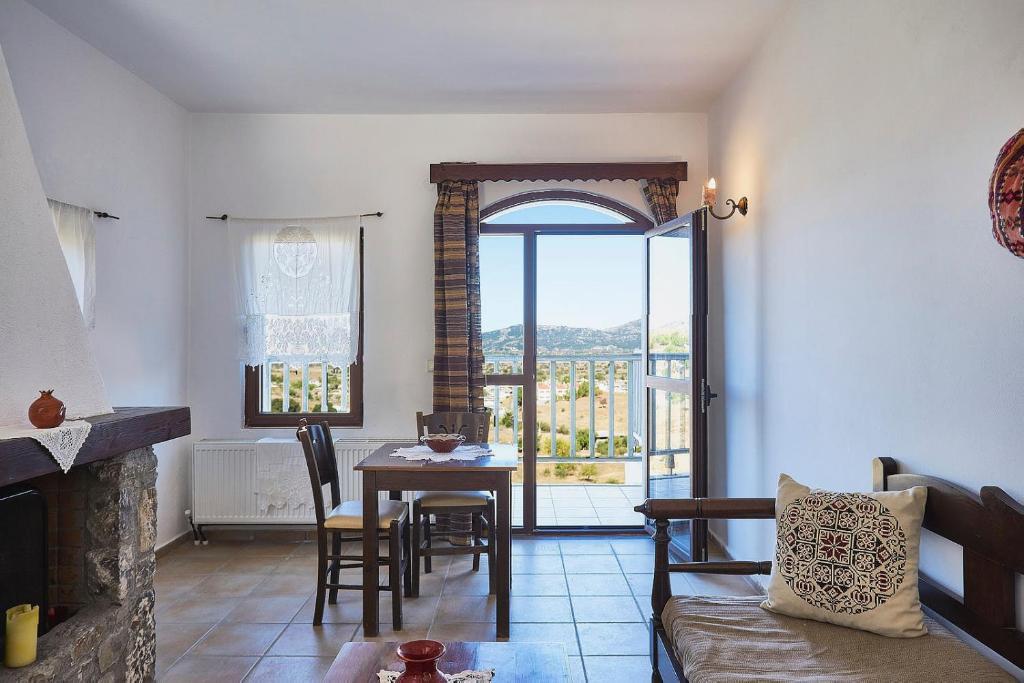Many abandoned villages in Crete have been restored -with respect to tradition and their natural environment- into top eco-lodges; offering guests an authentic and memorable experience.
Scattered amid olive, chestnut, and oak, above a ravine running with fresh mountain water- these stone houses take guests back to a simple era. In their pared-back elegance, they provide the perfect setting in which to embrace a lifestyle close to, and in harmony with, nature.
Milia- The village without electricity in Chania
A magical village that seems to have sprung from a fairy tale or the land of the Hobbits, hidden in a ravine in the mountains. Milia was abandoned for about four decades when the idea of turning the old houses of the village into a hotel was born. Today, 13 stone houses with small gates and views of the Cretan mountains from their veranda or terraces, fully justify why this ecological village without electricity, was included by Lonely Planet in the fifty best corners of the earth.
Don’t miss: Dinner at the restaurant of Milia, only by candlelight, they serve delicious dishes made with what has been produced from the garden and the farm of the village and cooked in the pot or the wood oven, from where the handmade bread comes out.
A: Vlatos, Chania
Enagron- Ecotourism in Rethymnon
Located on a farm of 50 acres with crops- from olives to vegetables and wild vegetation- and set above the springs of Mylopotamos, (at the foot of Psiloritis) at an altitude of 500 meters, Enagron sits opposite gorges and caves and features 32 houses perfectly adapted to the natural environment. Built in a village formation, they are complemented by the wood-fired oven, the cheese factory, the small grocery store with selected traditional products, the winery, the traditional cafe and restaurant; decorated with old objects, tools and works of art and the courtyard under the huge οak.
Don’t miss: The swimming pool built in the most impressive spot opposite the cliffs where the eagles have their nests; and the jacuzzi overlooking the steep rocks of the gorge of the Vultures.
A: Axos, Mylopotamos
Aspros Potamos – Green Tourism in Ierapetra
In the prefecture of Lassithi, 60 km from Agios Nikolaos, in this old metochi (monastery) of the larger village of Pefki, there are ten 300-year-old stone-built houses featuring old Cretan architecture, which are connected by a cobbled path. Old chests, paintings, and stone beds, beamed ceilings and thick stone walls keep the houses cool in summer and warm in winter. The operation of Aspros Potamos is based exclusively on alternative forms of energy. The lights, the refrigerators and the hot water exist thanks to its photovoltaic system, which has won the first European award for Greece. There are no sockets in the houses.
Don’t miss: The view of the terraces overlooking the mountains and the valley. The atmosphere was created by the fact that the main lighting of the houses is done with paraffin lamps and candles and the energy given that the reconstruction of the houses was done by groups of Austrian hippies, in exchange for their accommodation and food.
A: Makrigialos, Crete
Kapsaliana Village Hotel
In the heart of the largest olive grove in Crete, at an altitude of 260m. is a 17th-century settlement in the Old Metochi of the Holy Monastery of Arkadi. Restored with absolute respect for the history and architecture there, it was transformed into the Kapsaliana Village Hotel, a member of the Historic Hotels of Europe. Focusing on the historic monastery olive mill of 1763, the hotel settlement is spread over a privately owned landscaped area of 30 acres, with gardens, paths, a swimming pool, and 22 rooms and suites with independent entrances. Here, the contact with nature marries the aesthetics.
Don’t miss: The aromas of thyme, sage, and Cretan herbs from the veranda of your room. Breakfast with fresh products, from local producers but mainly dinner, at the romantic restaurant in the magical environment of the hotel.
A: Kapsaliana, Rethymno
Lassinthos– An ecological park in Lassithi
At a distance of about 50 km from the city of Heraklion, Lassinthos is spread over two hundred acres of ecological park, with various types of residencies, dominated by Cretan traditional architecture- with materials such as marble, stone and wood. Patterned paths lead to farms with various species of animals, such as chickens, ducks, geese, turkeys, impressive peacocks, pigeons, noisy partridges, pheasants, quails, tall ostriches, wild boars, horses and goats. The strolls end at the park restaurant, built of stone, wood, marble and tiles; where traditional Cretan dishes are served cooked by chefs trained especially in Cretan gastronomy and using organic ingredients from the farm.
Don’t miss: At Lassinthos’ ‘zoo’, in addition to the usual farm animals, you can also find the famous Cretan kri-kri, the arkalos (badger) hidden in its burrows, the beautiful deer that gracefully display their impressive horns, and the cute ponies.
A: St. George, Lassithi Plateau

